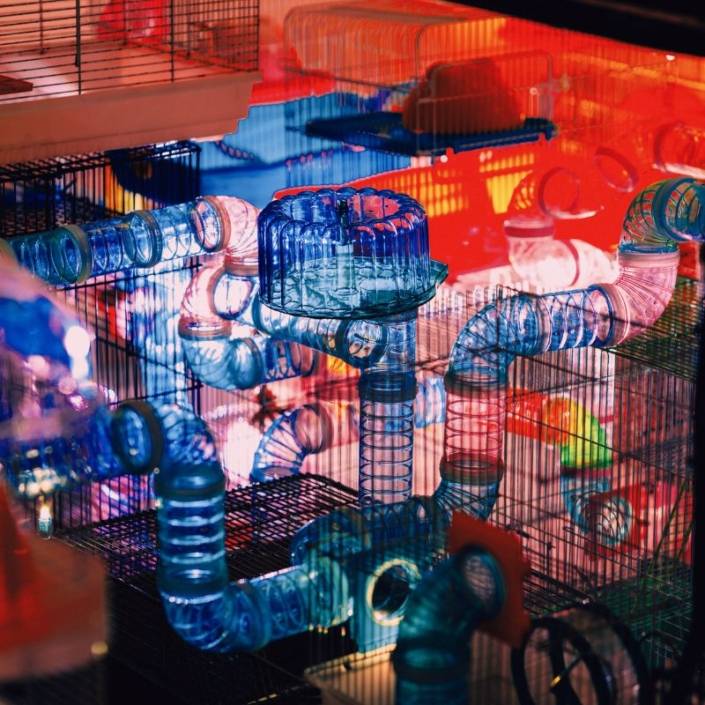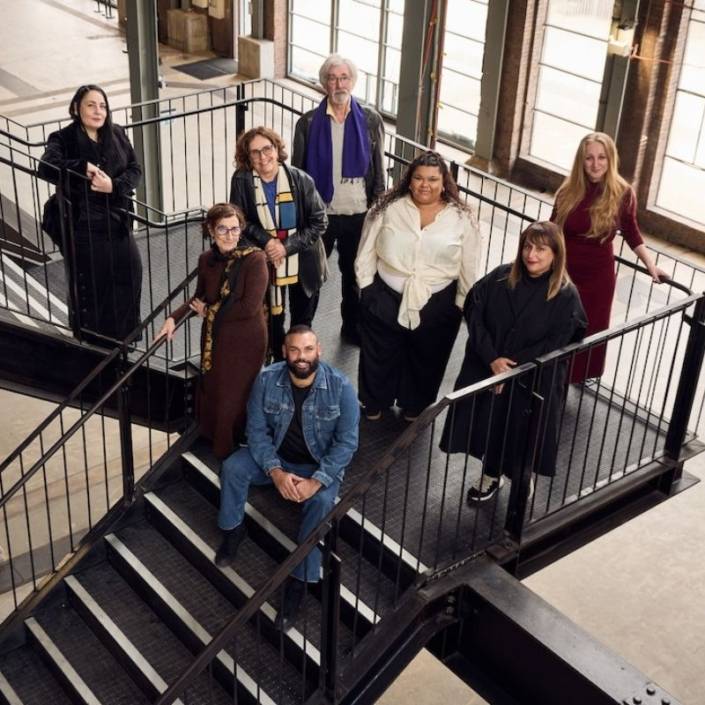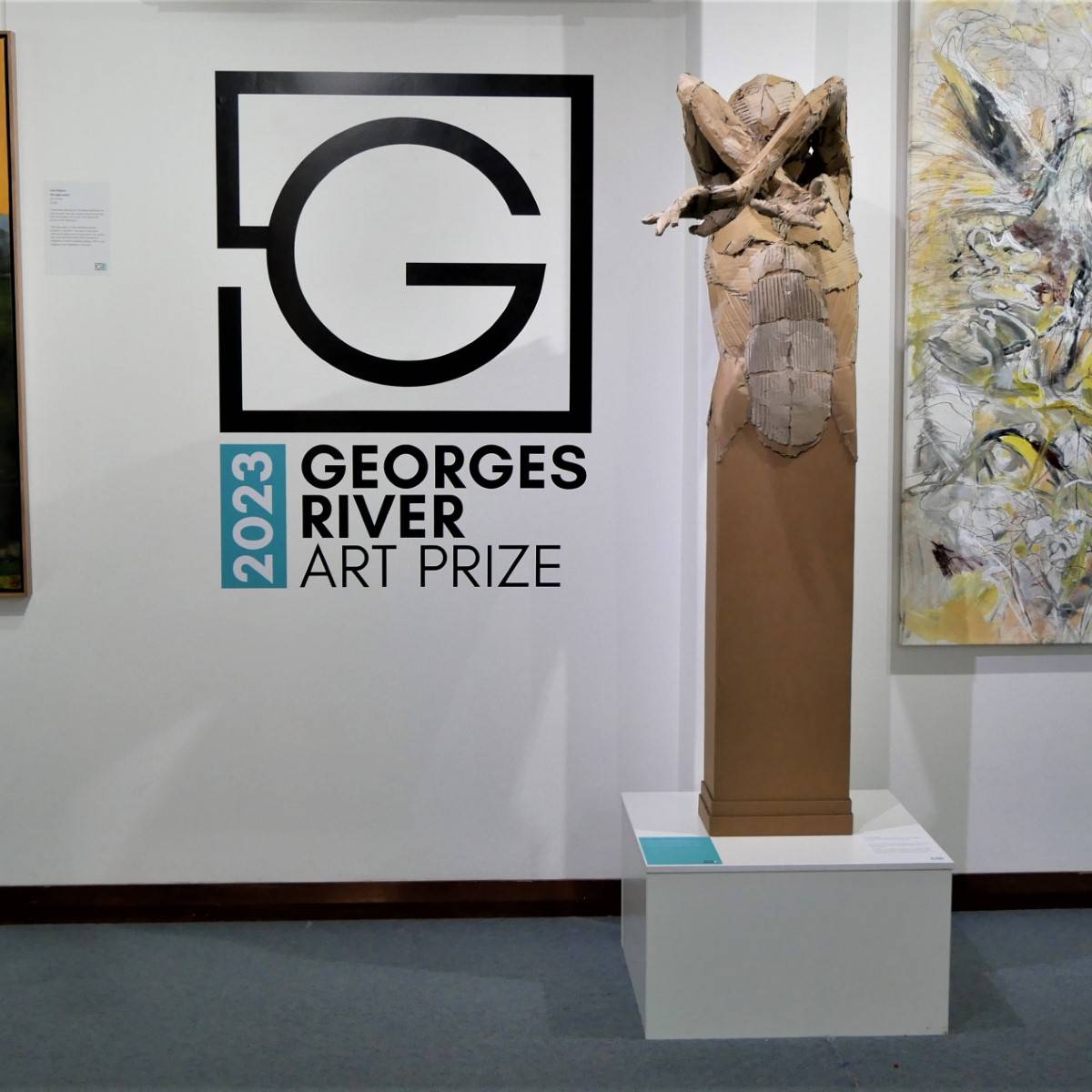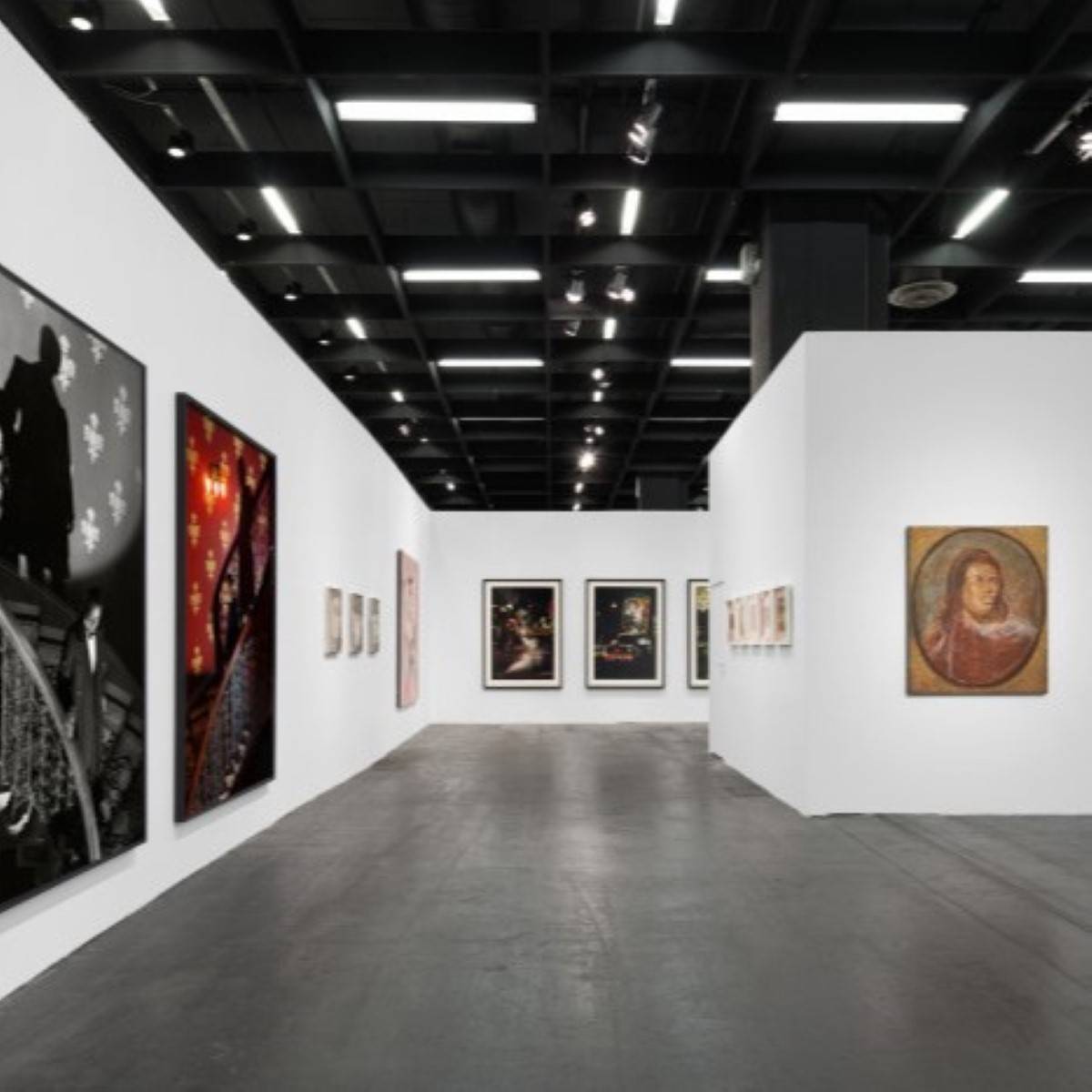Shedding light on the Biennale of Sydney’s 2024 edition
Big updates on artists, locations and programming for Ten Thousand Suns.
Words: Erin Irwin
The 24th edition of the Biennale of Sydney, titled Ten Thousand Suns, is set to take over Sydney from March next year. Led by artistic directors Cosmin Costinaș and Inti Guerrero, the Biennale will focus on creating and celebrating joy, as well as taking inspiration and hope from legacies of collective resistance to injustice. Among the many narratives that will run throughout the event will be the extoling of First Nations technologies and knowledge, the history of Islam in Australia, Queer resilience, and Carnivale. Amongst these dialogues will also sit an assessment of the climate crisis, framed within a sense of hope and a rejection of pessimistic visions of a tragic future.
“Ten Thousand Suns departs from an acknowledgement of a multiplicity of perspectives, cosmologies, and ways of life that have always woven together the world under the sun”, says Costinaș and Guerrero. “A multiplicity of suns conveys ambiguous images. It evokes a scorching world, both in several cosmological visions and very much in our moment of climate emergency. But it also conveys the joy of cultural multiplicities affirmed, of First Nations understandings of the cosmos brought to the fore, and of carnivals as forms of resistance in contexts that have surpassed colonial oppression”.
The joyful tone of the presentation will be communicated through the work of 88 artists and collectives from 47 countries including Australia, Aotearoa New Zealand, Indonesia, Brazil, Ukraine, the United States of America, the United Kingdom, Mexico, India, and Japan. Exhibited artists will include Australian artists Gordon Hookey, Tracey Moffatt, Serwah Attafuah, William Yang, VNS Matrix, Kirtika Kain, Joel Sherwood Spring and Juan Davila, alongside international artists Andrew Thomas Huang, Adebunmi Gbadebo, Pacific Sisters, Martin Wong, Frank Moore, Maru Yacco and Anne Samat.
Partnering with the Fondation Cartier pour l’art contemporain, the Biennale has commissioned 14 First Nations artists to create new works specifically for the event. Guided by Tony Albert, artists Mangala Bai Maravi, Doreen Chapman, Megan Cope, Cristina Flores Pescorán, Freddy Mamani, Dylan Mooney, Orquideas Barrileteras, John Pule, Eric-Paul Riege, Darrell Sibosado, Kaylene Whiskey, Yangamini, and Nikau Hindin in collaboration with Ebonie Fifita-Laufilitoga-Maka, Hina Puamohala Kneubuhl, Hinatea Colombani, Kesaia Biuvanua and Rongomai Gbric-Hoskins will reveal the latest developments in their practice, as inspired by the themes of the event.
The Biennale will be presented amongst a host of spaces, including the Art Gallery of New South Wales, Artspace, the Museum of Contemporary Art Australia, the Chau Chak Wing Museum at the University of Sydney, UNSW Galleries, and the recently restored White Bay Power Station.
White Bay Power Station will see a new commission by Dylan Mooney that commemorates the life of the late queer, First Nations dancer and activist Malcolm Cole, alongside Darrell Sibosado’s work in neon and the artist collective VNS Matrix’s provocative cyberfeminist banners.
The AGNSW will focus on themes of war and nuclear power, with Gordon Hookey referencing nuclear testing in the Pacific, and Maru Yacco creating large-scale wallpaper works that informed by Japanese popular culture and sub-cultures.
The presentation at MCAA will see works that explore queer narratives, including a painting by Frank Moore, who passed away from AIDS-related illness in 2002. Work by Kirtika Kain commissioned for the Biennale will also be exhibited, featuring a ten-metre-long canvas worked with unconventional materials.
The Chau Chak Wing Museum will present works by Mangala Bai Maravi from the Baiga group in India and Chinese-American painter Martin Wong, while Artspace presents a series of new works by Diné (Navajo) artist Eric-Paul Riege and evocative ceramic works by American artist Adebunmi Gbadebo. The UNSW Galleries see works by artist, curator and poet Elyas Alavi, alongside those of Wiradjuri anti-disciplinary artist Joel Sherwood Spring.
“As the Biennale of Sydney celebrates its 50th year, we can’t wait to come together in joyful celebration”, effused Barbara Moore, Chief Executive Officer of the Biennale of Sydney. “Admission is free, and we invite everyone to experience the most innovative contemporary art and ideas from around the world. Be inspired by the artwork and enjoy the robust program of music, food, talks, tours and performances, including our opening night event Lights On, throwing the doors of White Bay Power Station open to the public for the first time in over 100 years. This Biennale is not to be missed.”
Lights On will be held at the White Bay Power Station on 8 March 2024, headlined by Belgian international dance-pop sensations Charlotte Adigéry and Bolis Pupul. The opening weekend will also see performances by exhibiting artists including Eric-Paul Riege and Cristina Flores Pescorán. The Biennale will run until 10 June, and will include daily free art tours, contemporary music nights, performances by artist Tommy Missa titled Working Class Clown, and the performance night Queer PowerPoint.
Further announcements of programming and artworks will be made in the lead up to the event. For now, a full list of participating artists is as follows:
Adebunmi Gbadebo (USA), Agnieszka Kurant (Poland / USA), Agnieszka Polska (Poland / Germany), Alberto Pitta (Brazil), Andrew Thomas Huang (USA), Anne Samat (Malaysia / USA), Barrileteros Almas del Viento (Guatemala), Bonita Ely (Australia), Breda Lynch (Ireland), Candice Lin (USA), Chitra Ganesh (USA), Choy Ka Fai (Singapore / Germany), Christopher Myers (USA), Christopher Pease (Minang/Wardandi/Bibbulmun, Australia), Citra Sasmita (Indonesia), Cristina Flores Pescorán (Perú / Netherlands / USA), Darrell Sibosado (Bard/Noongar, Australia), Destiny Deacon (KuKu [Cape York] & Erub/Mer [Torres Strait], Australia), Dhopiya Yunupiŋu (Gumatj/Yolŋu nation, Australia), Diane Burns (Anishinaabe/Chemehuevi, USA), Doreen Chapman (Manyjilyjarra, Australia), Dumb Type (Japan), Dylan Mooney (Yuwi/Meriam Mir/South Sea Islander, Australia), Eisa Jocson (Philippines), El Gran Mono (Colombia / Australia), Elyas Alavi (Hazara, Afghanistan / Australia) – with Hussein Shirzad (Afghanistan / Australia), Jimmy Hintons (Australia), John Hintons (Australia) and Alibaba Awrang (Afghanistan / USA) – Eric-Paul Riege (Diné/Navajo, USA), Felix de Rooy (Curaçao / Netherlands), Francisco Toledo (Mexico), Frank Bowling (UK / Guyana), Frank Moore (USA) Freddy Mamani (The Plurinational State of Bolivia), Gordon Hookey (Waanyi, Australia), Hayv Kahraman (Iraq / Sweden / USA), I Gusti Ayu Kadek Murniasih (Murni) (Indonesia), Idas Losin (Truku/Atayal, Taiwan), Irene Chou (Hong Kong / Australia), James Eseli (Kala Lagaw Ya/Badhulaig, Torres Strait Islands, Australia), Li Jiun-Yang (Taiwan), Joel Sherwood Spring (Wiradjuri, Australia), John Pule (Niue / Aotearoa New Zealand), Josh Kline (USA), Juan Davila (Chile / Australia), Júlia Côta (Portugal), Kaylene Whiskey (Yankunytjatjara, Australia), Kirtika Kain (India / Australia), Köken Ergun (Turkey / Germany), Kubra Khademi (Afghanistan / France), Lawrence Lek (Malaysia / UK), Leila el Rayes (Australia), Mangala Bai Maravi (India), Mariana Castillo Deball (Mexico / Germany), Marie-Claire Messouma Manlanbien (France), Martin Wong (USA), Maru Yacco (Japan), Mauroof Jameel and Hamsha Hussain (Maldives), Megan Cope (Ngugi/Noonuccal, Quandamooka, Australia), Ming Wong (Singapore / Germany), Monira Al Qadiri (Kuwait / Germany), Nádia Taquary (Brazil), Nikau Hindin (Te Rarawa/Ngāpuhi, Aotearoa New Zealand), Ebonie Fifita-Laufilitoga-Maka (Fungamapitoa, Tonga, Aotearoa New Zealand), Hina Puamohala Kneubuhl (Kihalaupoe, Maui, Hawai‘i), Hinatea Colombani (Arioi, Tahiti), Kesaia Biuvanua (Moce, Lau, Fiji), Rongomai Gbric-Hoskins (Te Rarawa/Ngāpuhi, Aotearoa New Zealand), Niño de Elche and Pedro G. Romero (Spain), Orquideas Barrileteras (Guatemala), Özgür Kar (Turkey / Netherlands), Pacific Sisters (Aotearoa New Zealand), Pauletta Kerinauia (Miyartuwi [Pandanus], Tiwi Islands, Australia), Petrit Halilaj (Kosovo / Germany) and Alvaro Urbano (Spain / Germany), and Robert Campbell Jnr (Ngaku/Dunghutti, Australia).
This article was posted 9 November 2023.
Image: Darrell Sibosado, Ngarrgidj Morr (the proper path to follow), 2022. Powder-coated steel, LED tubes, fittings and electrical component, 300 x 245 x 8cm (each panel). Photo: Darrell Sibosado. Courtesy: the artist and the National Gallery of Australia, Canberra.







